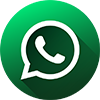 Book Appointment
Book Appointment

Perthes Disease, or Legg-Calve Perthes disease, is a condition that usually affects children of the age group 4-8 years old but can extend to two to 12 years old in some cases.
In this condition, children experience a brief blood supply loss to the rounded head of the thigh bone (femur), usually known as the ball part of the ball and socket joint. With inadequate blood supply, the bone becomes weak, leading to multiple small fracture lines in the head of the femur. Further, the bone gets reabsorbed and leads to the collapse of the femoral head and possible loss of its roundness.
The condition is not permanent as the blood supply returns eventually, and bones re-ossify. However, the femoral head may not retain a round shape due to the disease or re-ossification process if the femoral head slips out of the acetabulum (socket of ball and socket joint) before complete healing. As a result of this, children tend to develop early osteoarthritis of hip.
In the early stages of the disease, parents might notice a limp, which may be painless, or sometimes complaints about knee, groin, or hip pain (which is usually mild). However, these symptoms can vary according to the severity and stage of the disease.
Here are other symptoms that you should watch out for:
At Maruti Clinic for Children Orthopaedics, our treatment depends on an accurate diagnosis and staging of your child's condition.
First, we will physically examine the child and see if they face problems rotating their legs. In cases of extended non-use of the affected limb, it is not uncommon for the muscles in the thigh, calves, and buttocks to exhibit signs of atrophy.
In case the disease is suspected, our team will conduct an X-ray of the child's hips. Next, we may recommend an MRI in a few cases. In some cases, we might ask for certain blood test reports to rule out infections and other medical conditions.
Based on our assessment, we will suggest non-surgical or surgical procedures:
● Non-Surgical Treatment:
We will recommend non-steroidal anti-inflammatory medicines like Ibuprofen or Acetaminophen, depending on the degree of pain and stiffness.
Children with mild symptoms of Perthes disease can undergo physical therapy, where we introduce a variety of exercises that will restore their motion and reduce pain and inflammation.
We might as well advise using a removable cast or braces occasionally to allow limited joint movement, permit the thigh bone to remould itself, or hold the thigh bone in the hip socket. Few children may need traction also.
Based on the severity of the symptoms, some kids might require assistive devices like wheelchairs or crutches for a short duration - to take the pressure off their hips.
● Surgical Treatment:
Depending on the age of the child and the stage of the disease, your child might require a femoral osteotomy - where we will change the angle of the femoral head with shaft for proper positioning of the head in the socket.
Some children may need other surgeries, depending on the stage and severity of disease.
Children who undergo this procedure may be required to stay in the hospital for 2-3 days.
Throughout the treatment, you can entrust us to provide your child with compassionate care and help them heal faster so that they can return to a healthy and pain-free life.
